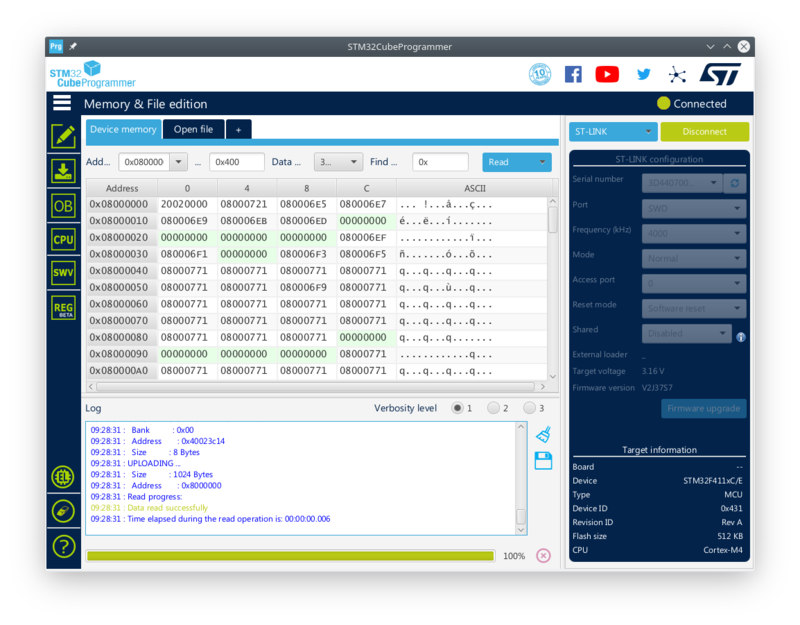Difference between revisions of "STM32 Readout Protection (RDP)"
Jump to navigation
Jump to search
| Line 1: | Line 1: | ||
[[Category:STM32]][[Category:STM32 Hardware]][[Category:STM32 Development]]{{metadesc|STM32 Read Out Protection}} | [[Category:STM32]][[Category:STM32 Hardware]][[Category:STM32 Development]]{{metadesc|STM32 Read Out Protection}} | ||
| − | All [[STM32]] [[MCU]]s feature something known as [[STM32 Read Out Protection (RDP)|Read Out Protection]]. It is probably a feature of the ARM Cortex core, since [[ST]] also provide something known as [[STM32 Proprietary Read Out Protection (PCROP)|Proprietary Read Out Protection]]. | + | All [[STM32]] [[MCU]]s feature something known as [[STM32 Read Out Protection (RDP)|Read Out Protection]]. It is probably a feature of the ARM Cortex core, since [[ST]] also provide something known as [[STM32 Proprietary Read Out Protection (PCROP)|Proprietary Read Out Protection]] which is only available on certain [[STM32]] models. In this document we will take a brief look at the basic Read Out Protection. |
| + | |||
| + | == Test Example == | ||
| + | |||
| + | Using the [[STM32CubeProgrammer]] we can read out the code (flash) of a [[STM32]] [[MCU]] (in this case a [[Black Pill Board]]. | ||
| + | |||
| + | [[File:Code Read.png|800px]] | ||
Revision as of 03:43, 4 July 2021
All STM32 MCUs feature something known as Read Out Protection. It is probably a feature of the ARM Cortex core, since ST also provide something known as Proprietary Read Out Protection which is only available on certain STM32 models. In this document we will take a brief look at the basic Read Out Protection.
Test Example
Using the STM32CubeProgrammer we can read out the code (flash) of a STM32 MCU (in this case a Black Pill Board.
